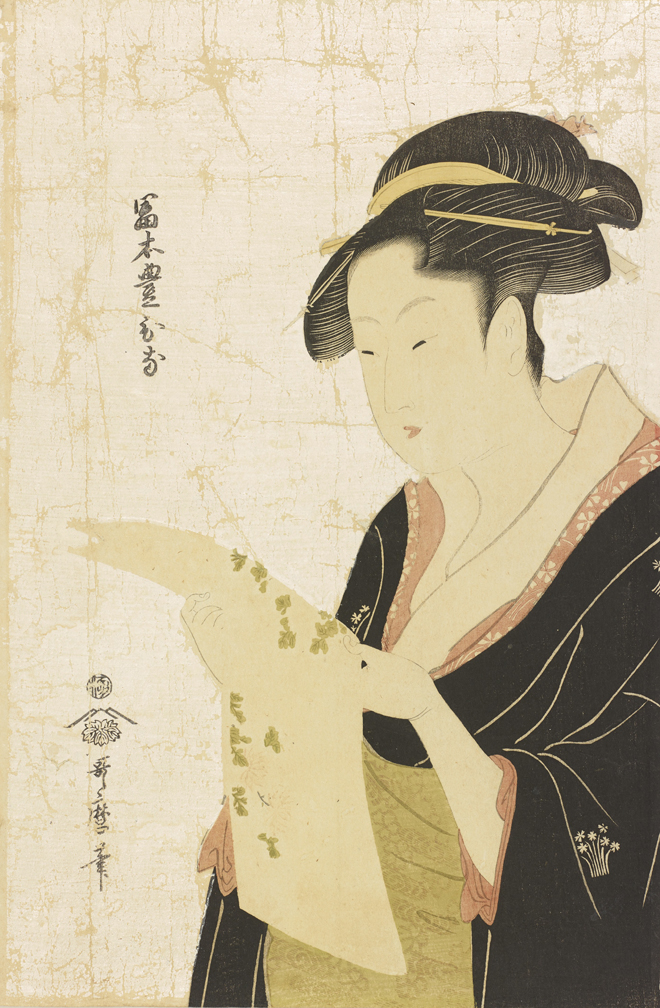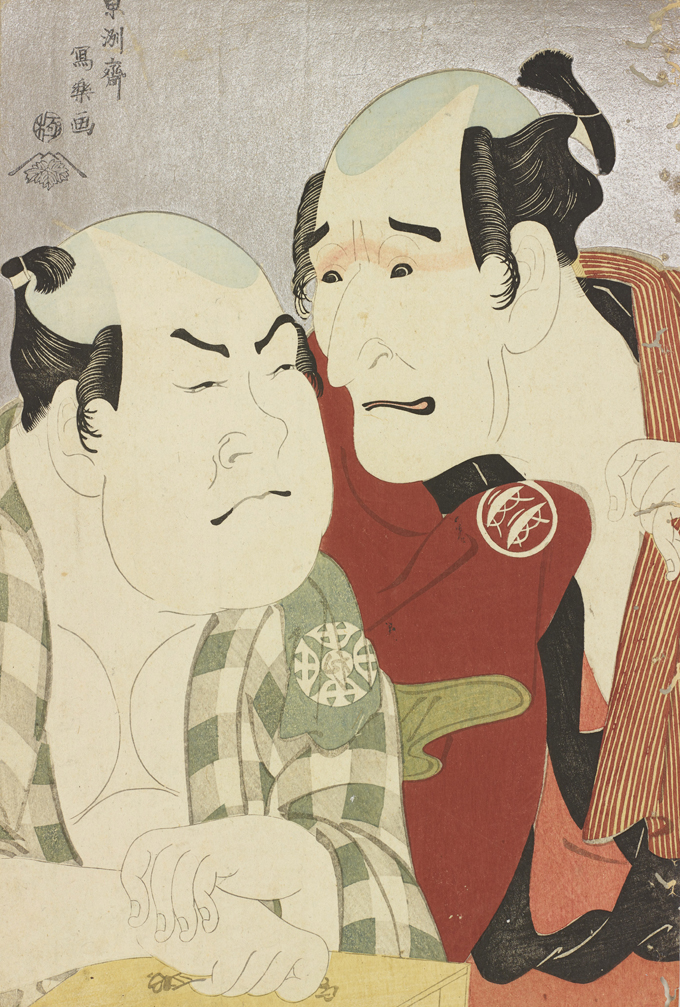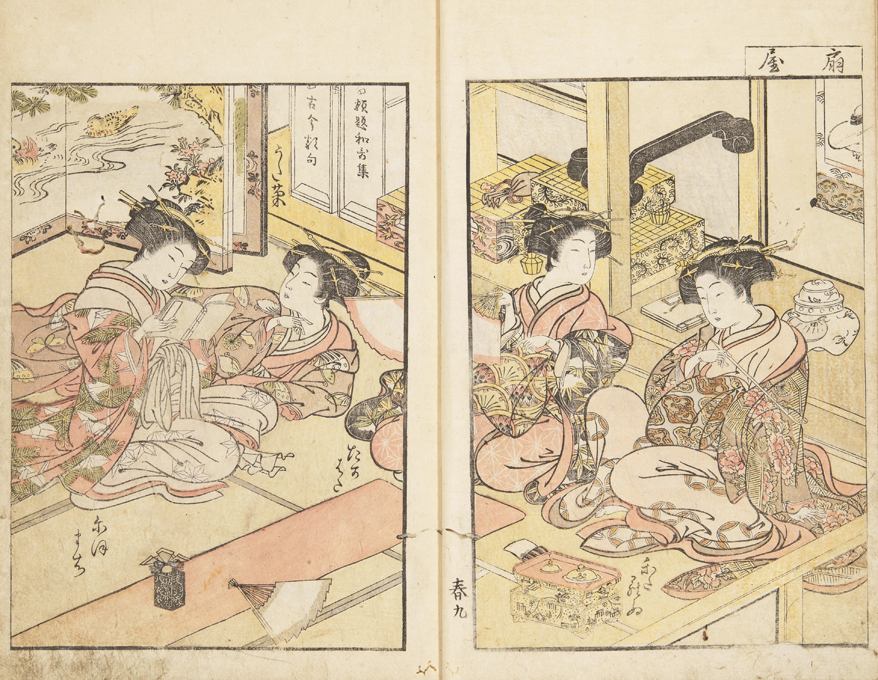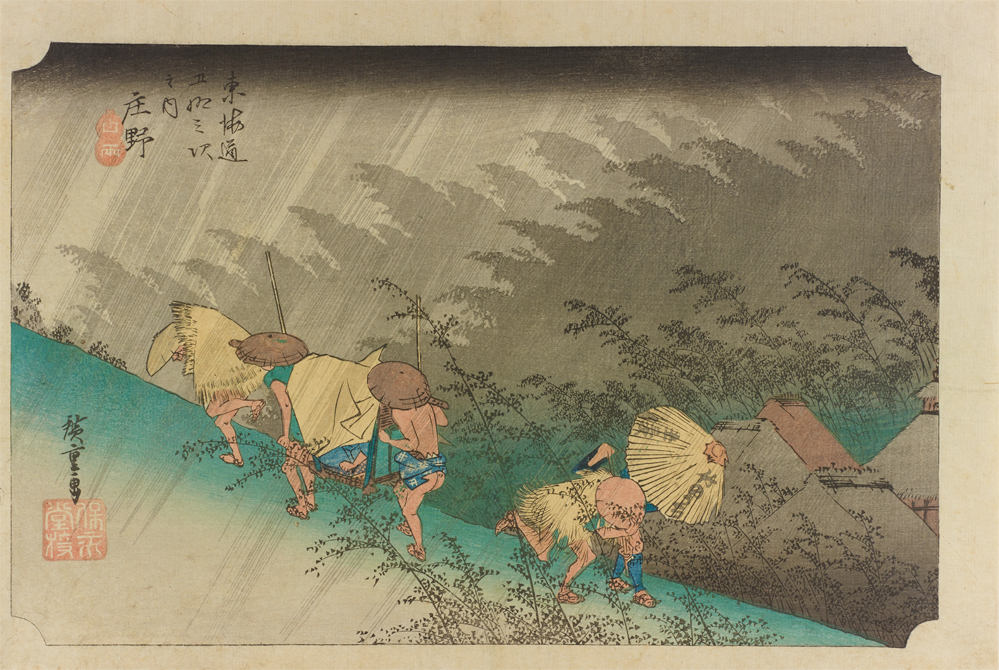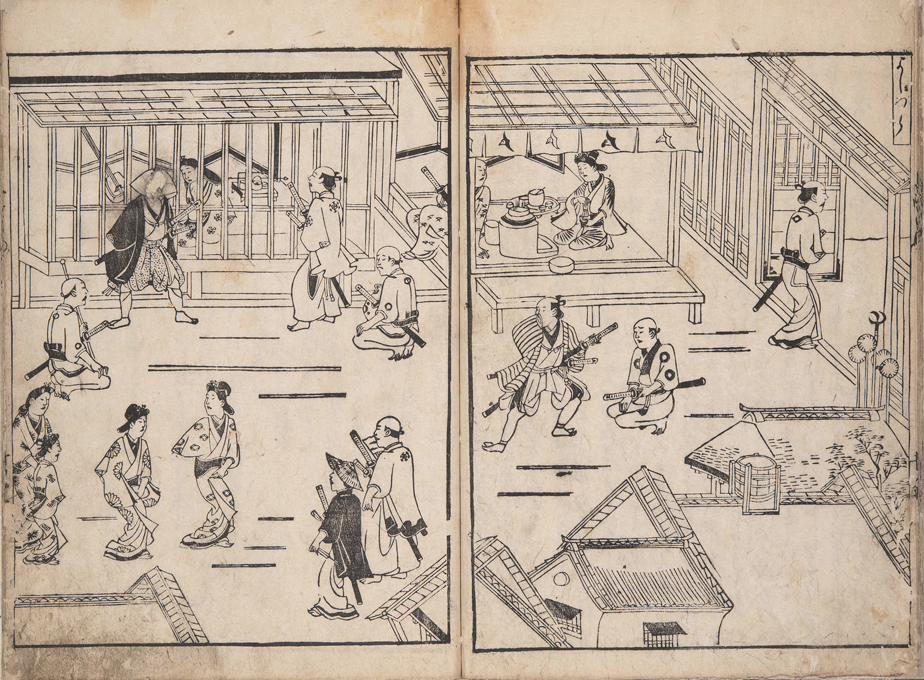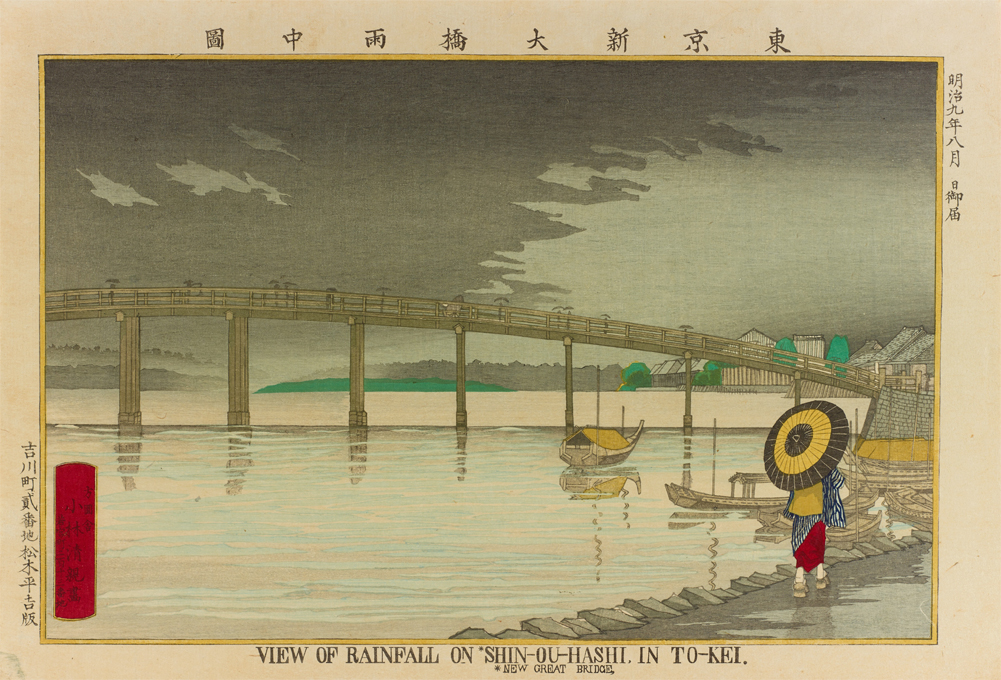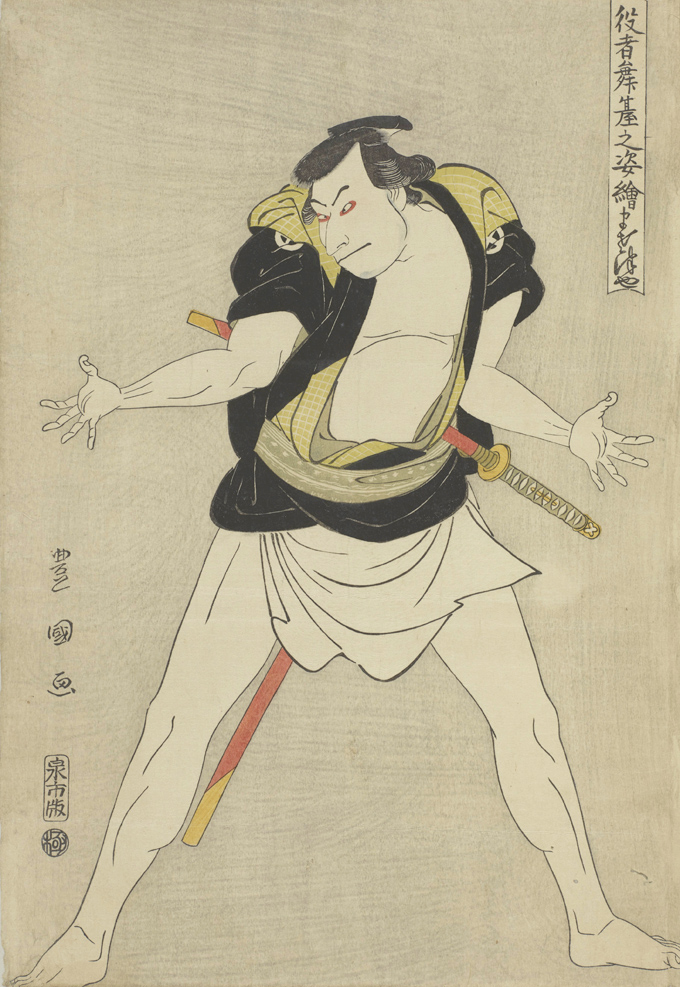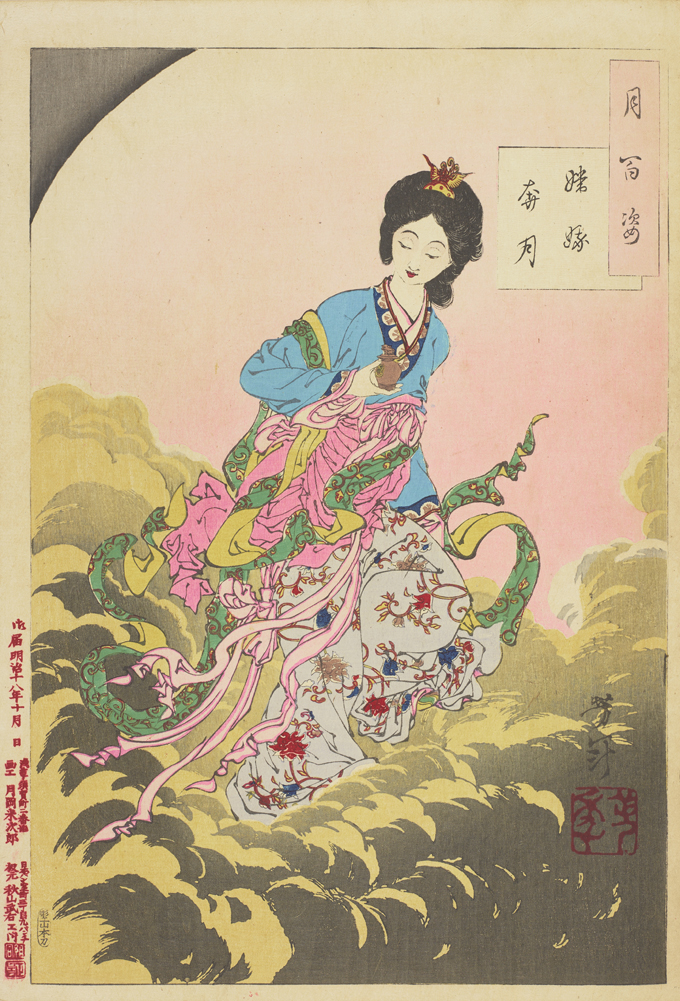Tsutaya Jūzaburō and the Chronicles of Publishers

2025, August 30th-November 3rd
1st Term August 30th-September 28th
2nd Term Octber 3rd-Nobember 3rd
Will be closed on September 1, 8, 16, 22, 29, 30, Octber 1, 2, 6, 14, 20, 27
Opening Hours : 10:30 a.m. – 5:30 p.m. (Last Admission: 5:00 p.m.)
Admission : Adult ¥1200 / University and High school students ¥800 / Junior High School Students and below(under 15 years old) FREE
・LIST
During the Edo period (1603–1868), Hanmoto (publishers) oversaw ukiyo-e production by managing ukiyo-e artists and craftsmen, and directed the planning, creation, and sales of the prints. Among them, Tsutaya Jūzaburō(Tsutajū) played a major role in the history of ukiyo-e, such as producing Kitagawa Utamaro and Tōshūsai Sharaku with outstanding talent, garnering a golden age for ukiyo-e.
Publishing culture flourished during the Edo period; not only Tsutaya Jūzaburō, several other publishers played active roles. Therefore, this exhibition will feature twelve publishers who were prominent over approximately 230 years, from the dawn to the decline of ukiyo-e, spanning from the Edo period through the Meiji era (1868–1912). Through a selection of works, we invite you to enjoy this glimpse into the publishers’ dedication hidden in the shadow of the masterpieces and human drama with the artists.
Tsutaya Jūzaburō is famous for producing works by Kitagawa Utamaro and Tōshūsai Sharaku, but he also worked with other leading artists of the time, such as Kitao Shigemasa, Katsukawa Shunshō, and Torii Kiyonaga. A highlight of this exhibition is the collection of masterpieces created by Jūzaburō and these top artists. Among them, Utamaro’s works include beautiful kyōka (humorous poems) picture books and masterpieces of the ” Head shot portraits of beautiful women” (bijin ōkubi-e) that became huge hit with their close-up portrayals of women’s faces. In addition, you can see all 15 works of Sharaku in the first and second periods, including the ” Kabuki Actor Kataoka Nizaemon Ⅶ as Kino Natora”, which is only held by the Ota Memorial Museum of Art in the world.
Tsutaya Jūzaburō wasn’t the only brilliant publisher who nurtured top artists whose names would be remembered by later generations. There was also Tsuruya Kiemon and Urokogataya, who teamed up with Hishikawa Moronobu, the first ukiyo-e artist. Nishimuraya Yohachi recognized the talent of Katsushika Hokusai and produced the renowned “Thirty-Six Views of Mt. Fuji” series, while the up-and-coming publisher Takeuchi Magohachi succeeded with Utagawa Hiroshige’s “Fifty-three Stations of the Tōkaidō Road” series. In the Meiji era, seeking new forms of expression, Matsuki Heikichi collaborated with Kobayashi Kiyochika to release “Kōsen-ga” (light-ray paintings), and Akiyama Buemon produced masterpieces by Tsukioka Yoshitoshi one after another, such as the “One Hundred Views of the Moon” series. This exhibition will introduce the achievements of these publishers who released masterpieces that have been passed down through history.
Tsutaya Jūzaburō was not just one person, but actually continued until the fifth generations. In this exhibition, we will introduce the works published by the second generation in collaboration with Katsushika Hokusai.
Admission
| Adult | 1200 yen |
| University and High school students | 800 yen |
| Junior High School Students and below (under 15 years old) | Free |
Calendar
■CLOSED
休館日
4,12,18,25-29
2025 / 08
4,12,18,25-29
| SUN | MON | TUE | WED | THU | FRI | SAT |
|---|
休館日
1,8,16,22,29,30
2025 / 09
1,8,16,22,29,30
| SUN | MON | TUE | WED | THU | FRI | SAT |
|---|
休館日
1,2,6,14,20,27
2025 / 10
1,2,6,14,20,27
| SUN | MON | TUE | WED | THU | FRI | SAT |
|---|
